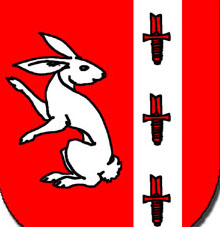“Inches in 8.33 feet”
“Mm in a foot”
Fool, the scientist in me is infuriated. Good work, mate!

Fever is not 100F. A fever is defined as 100.4F. Why 100.4 when 100 is a much easier to remember and handle number? Because fever is defined in humans as 38C, and that converts to 100.4F.
It’s been a while but I think they tried to establish 100F as the average human body temperature. But after they established that baseline turns out they were off by 1.4 degrees and couldn’t change it.
People’s body temperature used to be higher a century ago, but I think it was less then 1°C.
EDIT: Apparently since the early 1800s, men’s body temperature changed about 0.59°C and women’s about 0.32°C.
That’s really interesting. Does anyone know why?
I believe there’s a theory that the average person had at least one source of inflammation in their body.
Hasn’t the fever temperature changed recently or something
You’re right. April 8th 2000 Christopher Walken caught a fever that changed the course of history forever. He had a fever and the only cure was more cow bell.
That’s a sigfig error. A fever is 38C, which is 2 significant digits. Converting to 100° F goes up an order of magnitude so you get a free sigfig, but unless the original number was 38.0C, you don’t get that 0.4, you’re implying precision that the original measurement never gave you.
This is actually a super fascinating example of the way data can be displayed in a technically correct way to lead the viewer to completely invalid conclusions.
It’s even more fascinating how everyone is seriously debating over this meme
Tbh I don’t really get why people get upset about mm/dd/yyyy vs dd/mm/yyyy. Is it a little weird? Sure, but personally, saying “July 4th, 1776” feels as natural as “the 4th of July, 1776”. The former is more formal, the latter is more casual.
People don’t get upset about saying the date in whatever format. They get upset when you write it in that format without specifying, so that you don’t know if 07/04/1776 is July 4th or April 7th.
I love it when someone sends me a message like this:
Hey there! What are you doing on 4/5?
???
deleted by creator
It’s not about saying it. It has to do with ordering it by size of time unit. Like I don’t write the time as 43:12:19 to denote 43 minutes and 19 seconds past midday do I.
If it’s about size of time unit surely it should be 2023/11/20?
ISO8601 is the best format and the international standard to denote date and time.
2023-11-21T00:34:2
Don’t think my bank will like it if I date forms with that.
Mine doesn’t care. It actually never occurred to me not to.
deleted by creator
How do you decide what the second will be, when you start writing it or when you finish?
deleted by creator
I’m not sure I would agree with that. ISO-8601 is ambiguous, and very difficult to parse. For example, here are a couple valid ISO-8601 strings. Could you let me know what they mean?
P1DT1H R10/2021-208/P1Y T22.3+0800 22,3 2021-W30-2 2021-W30-2T22+08 P1Y 20Taken from here. My favorite is the last one (
20). If someone just wrote20and told you to parse it using ISO-8601, what would you get? Hour? It could even be century (ie.2023%100)!!So I would argue that ISO-8601 is just a wee bit too flexible. Personally, I like RFC 3339 just a bit more…
Edit: that said, I would definitely agree that something along the lines of
2021-07-27T14:20:32Zis better than any regularly accepted alternative, and I pretty much format my dates that way all the time.
One word: Ambiguity. We need to either have a standard and stick to it, or a small handful of standards that cannot be confused for each other. DD/MM/YYYY and MM/DD/YYYY can be confused for each other, so the nonsensical MM/DD/YYYY should move over and make room for DD/MM/YYYY, or we should drop both and just use YYYY-MM-DD.
ISO 8601 ALL DAY EVERY DAY BABY
ISO 8601 for life.
The best date format is ISO 8601 anyways.
Because when usually dates formatted on number follow a descending or ascending order. Year -> Month -> Day or Day -> Month -> Year.
mm/dd/yyyy is:
– Month <- Day | Year <-
It’s not only strange but is also not easy to parse and can be confused with dd/mm/yyyy
Because they’re teenagers. In the real world nobody actually gives a fuck. Call me weird, but the different formats have never caused me a single instant of confusion in my entire life.
Logic of America
Saturday Night Live actually had a good sketch about this a few weeks ago:
https://www.youtube.com/watch?v=JYqfVE-fykk
Washington: "We fight for a nation where we choose our own laws… choose our own leaders… and choose our own systems of weights and measures.
I dream that one day, our proud nation will measure weights in pounds, and that 2000 pounds shall be called a ton."
Rebel: “And what will 1000 pounds be called sir?”
Washington: “Nothing. Cause will have no word for that.”
…
Washington: “Distance will be measured in inches, feet, yards and miles. 12 inches to a foot!”
Rebel: “12 feet to a yard…”
Washington: “If only it were so simple. 3 feet to a yard.”
Rebel: “And how many yards to a mile?”
Washington: “Nobody knows.”
Rebel: “Ok, how many feet to a mile?”
Washington: “5280, of course! It’s a simple number that everyone will remember.”
The temperature measurement is true though. F describes the temperature scale that humans interact with much better than C does.
Kind of, but not really. 0F doesn’t mean anything special in relation to human interaction, it relates to the freezing point of some random salt and water mixture (not seawater). 32 is a random number for the freezing point of freshwater which humans do care about, and 212 is nonsense for boiling temp of water which humans also care about and routinely use. The only part pertinent is that 100 is close to, but higher than human body temperature, but not quite where it counts as a fever… just the temperature of a sub-feverish human… how is that helpful! Sorry I really don’t care for the Fahrenheit system and I’m prepared to die on this hill
0 F is really cold to a human (but still livable), and 100 F is really hot to a human (but still livable). I honestly don’t really care what temperature water boils at in my every day life. I know that if I put fire under a pot of water, it will boil eventually. Why would I need to know the exact temperature?
Cooking
Explain how it’s useful in cooking. Considering it doesn’t actually boil at 100 degrees unless there’s very specific environmental conditions
Hard disagree. 0°F is colder than the pont it stopped being cool, but not yet really cold. 100°F is many degrees into dying of melting, but also a few degrees short of a fever worth noting.
I don’t think I’ve ever seen either 0°F or 100°F used in any way to refer to actually temperature. It’s always defining the scale or comparing to °C. Maybe once when checking for a fever.
32 is a random number for the freezing point of freshwater which humans do care about, and 212 is nonsense for boiling temp of water which humans also care about and routinely use.
Humans care about the fact that water boils or freezes. Not the temperature at which it happens
Sorry I really don’t care for the Fahrenheit system and I’m prepared to die on this hill
I’m prepared to die on the Farenheit system is better for describing environmental temperature hill
The fever temperature, maybe. But the rest makes more sense in C. It’s so much easier when 0C is freezing and 100C is boiling. It works with cooking. Counting in increments of 5 or 10 also works for weather.
<0C = below freezing
0-10C = cold
10-20C = cool (sweater or hoodie)
20-30C = t-shirt weather
30C and above = hot
It’s so much easier when 0C is freezing and 100C is boiling. It works with cooking.
Explain how this is useful in cooking
20-30C = t-shirt weather
68 to 86 is a GIGANTIC difference. 68 is cold for many many people, certainly not “t-shirt weather”. and 86 is hot, much more than “t-shirt weather”.
Same with feet and inches for distance.
wait 100 F is only 38 degrees?
Wow that’s funny. I’ve seen so many people complain about extreme heat below 100 F.
I get that what you’re not used to is difficult but like 38 degrees is a relatively ordinary (now) summer day for me.
From how people spoke about it I thought 100 F was more lile 45
I think that if the air is moist enough 38 degrees will overheat the body and kill it. Because the human body sweats to lose heat.
So some regions on earth are probably less pleasant when the temperature rises. While other regions are more tolarable for humans.
So there might be a reason why some people complain that they suffer from the heat. There could also be other reasons like their living conditions. A lack of ac and water, or living in a urban heat hell.
Lets not trivialize experiences of people who suffer.
Fun fact. -40 degrees is the same in both C and F, and is also called “January” where I live.
I live in a place that has -40°C winters and +40°C summers now 👍
God I sure do love global warming
1776-07-04
Sorting algos all agree.
USA’s measurment system dosn’t make any senses.
Shut up. If you don’t know how many buckets there are to a hogshead, that’s not our fault.
I think the two points missing from most debates are
-
The imperial system does a damn good job at measuring things the way a human would. A foot is roughly the length of a big foot. A single degree farenheit is just big enough that you could guesstimate it with enough practice. If the temperatures are negative, you dump sand on the roads instead of salt.
-
It’s like seven units of measurement in a trenchant. You never have to convert gallons to cubic miles. You never have to convert from dots to angstoms, and nobody has ever had to convert the surveyors mile to the nautical mile. It feels schizophrenic because claiming it’s one singular system is like saying Italian, French, and Portuguese languages are all regional dialects of Europeanese.
My point isn’t “it’s not a bug, it’s a feature”, I’m saying for the average non-scientist there may be a logical reason why we like it so much
-
fuck BOTH these date formats.
ISO-8601 OR DIE.
Good morning on this beautiful day, 2023-W47‐2T10:26
2023‐325T21:11+00:00
it’s extra handy because it taught me how to better visualize the chronological position of minecraft snapshots! 2023w47 has kinda sucked, from what i hear second-hand, due to some accidental features people were excited about being removed as “bugs”.
sweden approves
When used in casual speech, you drop the year most of the time, so the month comes before the day. just like Americans would say. Don’t tell the people that hate how Americans do things, though.
so the month comes before the day. just like Americans would say
Sez you. 1st of January. 14th of February. 25th of December. This is the way and the truth and the light.
I’ll grant that farenheit has merit, but for me, the foot/inches distance works a bit better for casual measurements, and stuff that doesn’t have to be very precise.
Beyond maybe someone’s height, I’d rather work in metric. I’m also very much in favor of celsius and I still have trouble converting between the temperature scales. I grew up with temps in degrees C, and height and some sort distances in feet/inches. IDK, I’m weird.
The date thing drives me nuts though.
I’ve adopted year month day as the superior sorting method
This is the only way. DD-MM or MM-DD is confusing when it’s something like 12-03-2023. Is it December 3 or March 12?
It’s confusing because of USA, if they applied what everyone in the world uses it wouldn’t really be a problem.

















